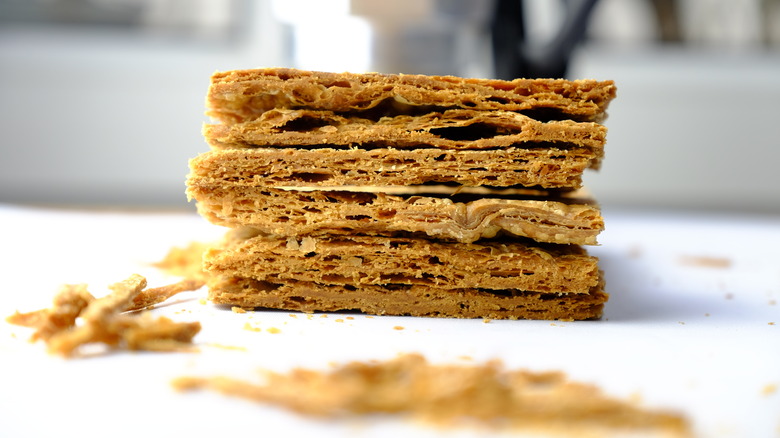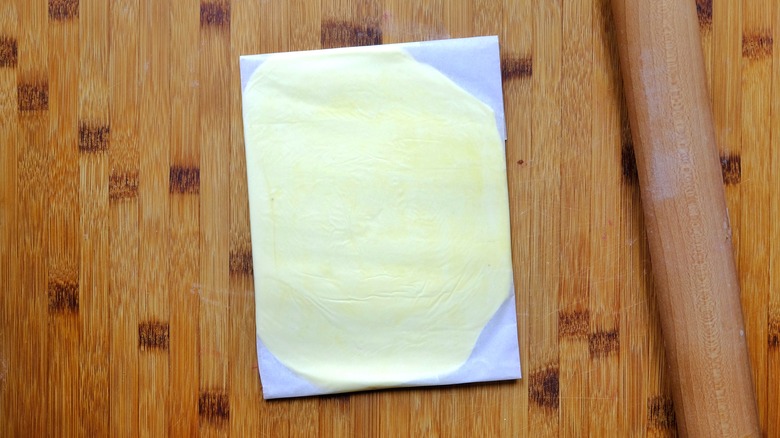The Parchment Paper Trick That Creates The Perfect Butter Block For Puff Pastry
Whatever puff pastry recipe you're whipping up, you have to get your butter block proportions right. This is the difficult part of making puff pastry, and it's where people tend to make key mistakes, but one expert has a tip for achieving that perfect butter block.
In his instructions for homemade puff pastry, Mashed recipe developer Eric Ngo notes that using parchment paper is a great way to get your measurements right. When rolling out the butter that you'll eventually fold into your base dough, create a parchment envelope by folding the paper around the block. For 18 ounces of dough, which according to Ngo "will make enough puff pastry for a 24-inch pie [or] tart," the fully folded envelope will need to be 6 by 10 inches in size.
Once the butter is inside the finished envelope, use a rolling pin to flatten it out, then chill it in the fridge while you prep the dough for folding. When you take the butter out of its envelope and lay it in the center of the base, you should be able to fold each side of the base to completely cover the butter. This method ensures your butter sheet is of a consistent size and thickness. The parchment also prevents the butter from transferring to your rolling pin, ensuring you don't lose any product.
Why butter is important for a flaky puff pastry
While this parchment paper method may seem like a lot of extra effort, mishandling your butter is the most classic puff pastry mistake you can make. If you roll out the block too thin, for example, the layers can break and cause the butter to leak out during baking. Leaving it too thick, on the other hand, will force you to over-roll the dough. The more you roll, the less insulated the layers will be, meaning you'll end up with a paste instead of a pastry.
Another common butter-related misstep is allowing it to soften, which you definitely want to avoid if you want high-quality puff pastry. Butter's consistency fluctuates depending on its temperature, as it moves between solid and liquid forms. The ideal mix of firmness and malleability is what bakers refer to as the "plastic" state, which occurs between 68 and 72 degrees Fahrenheit. Butter that's too cold will break through the dough, resulting in an uneven, greasy product. Perfectly textured puff pastry is filled with little air pockets, which form when the butter melts during baking. If the butter has already begun to melt before your pastry goes into the oven, these pockets won't form, preventing the dough from expanding and, consequently, becoming flaky.

